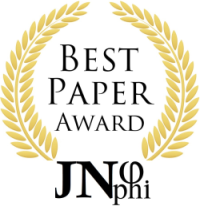The Brain is within the Self and Not Our Entire Self
Abstract
This article explores the true nature of the "self" by excusing the human fear of death and historical attempts to uncover immortality. The human desire for immortality motivates us to study the nature of the self in order to keep it as much as possible. However, the factors that influence self and self-awareness are very complex, and some of them vary each time. Therefore, self-perception changes over time, and recreating it without considering these factors through newly proposed approaches, such as mind uploading or copying the mind into a new brain, may be a challenging endeavor. It seems that despite the complexity and importance of neural networks, the brain cannot fully explain self-awareness. Self-awareness is an emergent property of the brain that arises from its interaction with a set of variable factors that form each moment.
Downloads
Metrics
References
Ahrensdorf P J. The Fear of Death and the Longing for Immortality: Hobbes and Thucydides on Human Nature and the Problem of Anarchy. The American Political Science Review 2000; 94: 3 579-593.
Askenasy J, Lehmann J. Consciousness, brain, neuroplasticity. Front Psychol 2013; 4: 412.
Bernecker S. Extended Minds in Vats. In: Goldberg S. (ed.) The Brain in a Vat. Cambridge University Press; 2016.
Cook S J Jarrell TA, Brittin CA, Wang Y, Bloniarz AE, Yakovlev MA, Nguyen KCQ, Tang LTH, Bayer E. A., Duerr JS, Bulow HE, Hobert O, Hall DH, Emmons SW. Whole-animal connectomes of both Caenorhabditis elegans sexes. Nature 2019; 571: 63-71.
Dyatlova AS, Novikova NS, Yushkov BG, Korneva EA. Chereshnev VA. The Blood-Brain Barrier in Neuroimmune Interactions and Pathological Processes. Her Russ Acad Sci 2022; 92: 590-599.
Downloads
Published
How to Cite
Issue
Section
License
Copyright (c) 2024 Hamid Zand

This work is licensed under a Creative Commons Attribution-NonCommercial-ShareAlike 4.0 International License.
Authors continue to hold copyright with no restrictions.














